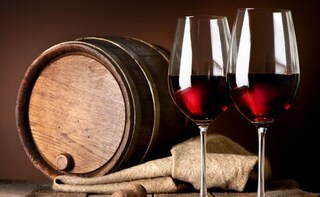My wine life has been good. Great, even. Under the guise of professional responsibilities, I've tasted cabernets that cost an average monthly salary. I've been invited into cold Burgundy cellars to sample wines that could finance a new car.
That isn't to say I'll turn down a great wine, even a proverbial unicorn wine (someone, please garrotte that term), if I have the chance. But I can't keep worrying about those moments of reflected glory. I can't let FOMO - fear of missing out - dictate my life. It's like British wine critic Andrew Jefford, who recently acknowledged that "something had changed in my relationship with wine. I didn't want the best anymore."How to achieve that? Think of it as a less wonky version of the Billy Beane strategy for baseball that Michael Lewis documented in "Moneyball." If you can't afford great, then get the best out of good.
And, sure, simple numbers can't always capture the romance of greatness: Is Jayson Werth worth 4.3 Bryce Harpers? Is Domaine de la Romanée-Conti's timeless La Tâche worth 46 bottles of a $65 Vosne-Romanée from neighbor Jérome Chezeaux (or 100 bottles of Beaujolais from a brilliant talent like Jean-Louis Dutraive)?Maybe it is, in that the $3,000 La Tâche offers a rare window into timelessness. But how many of us will ever have the opportunity to taste such great wines? In the words of Andrew Limberg, the wine director at Pineapple and Pearls, "For me, they are worth every penny, even though I don't have nearly enough of said pennies to afford them."That is especially relevant because Washington is a place that has long appreciated classic wines, with a strong tradition of middle-class aficionados stocking their cellars. But today, most of those wines are out of the price range of the average civil servant.This shift is also visible in the current, reasonable debate over fair value for both dining and drinking out, driven by tasting menus at places such as Shaw Bijou. It lies behind such innovations as Limberg's all-included beverage pairing at Pineapple and Pearls, which threads well-known regions with emerging ones like Australia's Adelaide Hills and takes price out of the equation. It has shifted the balance of drinking power, from whale lists like Plume's to nimble selections at places like Kinship, where wine director Kerstin Mikalbrown taps white Burgundy from outer boroughs like Mâcon-Loché and Saint-Romain. Or at Convivial, where it's almost impossible to find a wine above $100.
In each case, it is a matter of giving up on impressive in trade for - I'll borrow a word here from Mikalbrown's wine list - interesting.The appeal of these wines can be summed up by one of Lewis's lines in "Moneyball": "The pleasure of rooting for Goliath is that you can expect to win. The pleasure of rooting for David is that, while you don't know what to expect, you stand at least a chance of being inspired."
For now, I'll let inspiration win.
(This story has not been edited by NDTV staff and is auto-generated from a syndicated feed.)
Advertisement
That isn't to say I'll turn down a great wine, even a proverbial unicorn wine (someone, please garrotte that term), if I have the chance. But I can't keep worrying about those moments of reflected glory. I can't let FOMO - fear of missing out - dictate my life. It's like British wine critic Andrew Jefford, who recently acknowledged that "something had changed in my relationship with wine. I didn't want the best anymore."How to achieve that? Think of it as a less wonky version of the Billy Beane strategy for baseball that Michael Lewis documented in "Moneyball." If you can't afford great, then get the best out of good.
And, sure, simple numbers can't always capture the romance of greatness: Is Jayson Werth worth 4.3 Bryce Harpers? Is Domaine de la Romanée-Conti's timeless La Tâche worth 46 bottles of a $65 Vosne-Romanée from neighbor Jérome Chezeaux (or 100 bottles of Beaujolais from a brilliant talent like Jean-Louis Dutraive)?
Advertisement
In each case, it is a matter of giving up on impressive in trade for - I'll borrow a word here from Mikalbrown's wine list - interesting.The appeal of these wines can be summed up by one of Lewis's lines in "Moneyball": "The pleasure of rooting for Goliath is that you can expect to win. The pleasure of rooting for David is that, while you don't know what to expect, you stand at least a chance of being inspired."
For now, I'll let inspiration win.
Advertisement
(This story has not been edited by NDTV staff and is auto-generated from a syndicated feed.)
For the latest food news, health tips and recipes, like us on Facebook or follow us on Twitter and YouTube.
Advertisement
